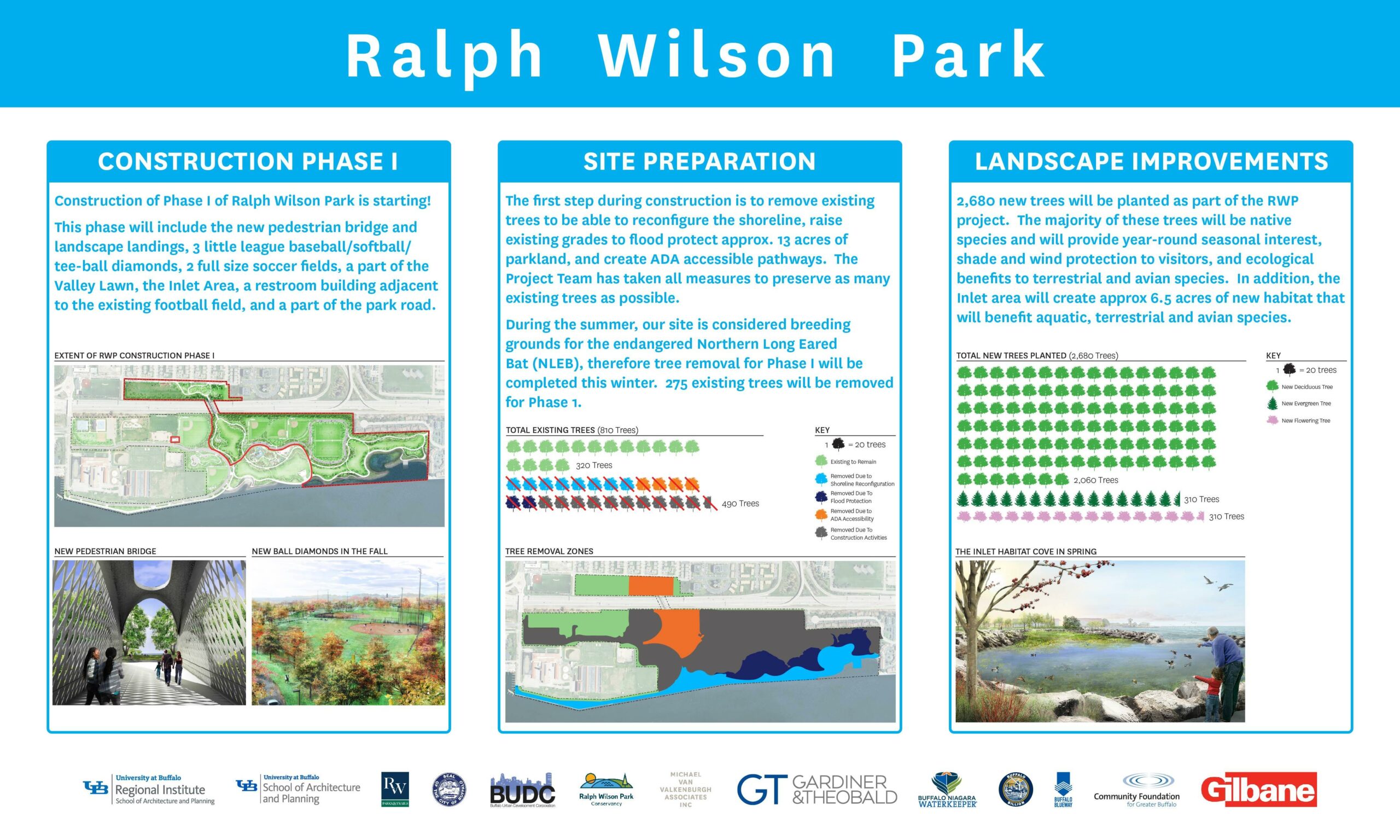
The transformation of LaSalle Park into Ralph Wilson Park came about through a community-led process with significant investment in increasing access to green space & waterfront and environmental stability. Protecting the park and rehabilitating the shoreline is of utmost importance to all involved.
As construction began last fall, about 275 trees were removed to allow for shoreline reconfiguration which is necessary for flood protection; ADA accessibility; and changes in topography (think: hills). About 2,680 trees will planted as part of the park’s reconstruction. The WNY Land Conservancy is collecting seeds from local native plants and growing many of these plants from the ground up. They will provide 50,000 plants, including trees, shrubs, grasses, and wildflowers to the park. This tree replacement process will provide a greater ecologic benefit to our shoreline than what was there before.
The park has been deteriorating and we needed to re-grade it to protect against rising water levels, increasing storms, and weather events. The park has been battered by storms. The majority of the park floods during a storm, and if the park wasn’t being rebuilt into the community’s vision, it would likely continue to be underwater during storm events and further compromise the seawall and park.
There are two reasons for this: primarily, climate change. We are experiencing more frequent and intense storms. There are intense winds and waves that pick-up strength as they come from the west part of Lake Erie. Those winds are funneled into the park — our shoreline and Canada’s creates a funnel as the lake flows into the Niagara River and the park is in the bullseye.
The second reason is that the hard shoreline doesn’t absorb and dissipate the wave action, and the shallow water level of Lake Erie creates a bathtub effect that increases, rather than decreases, the waves.
To protect against flooding from increased weather events and rising water, we are creating a new, resilient shoreline; raising the elevation of the park near the shoreline (581’ closer to the shoreline); introducing changes in elevation (hills) up to 30 feet; and ensuring that the park will be ADA accessible, which it currently is not.
Once the park is completed, we will have planted about 2,680 new trees (approximately 5x the amount of trees removed) that will provide comfort through shade and wind protection and seasonal interest through flowering and fall colors to all visitors. Some of the removed trees will find a second life in the inlet area as rootwads and standing snags to enhance the new habitat being created.
The trees were removed in the early winter of 2022 as a way to protect the Northern Long Eared Bats, who were in hibernation elsewhere by that time. This was a requirement of the regulatory agencies to protect the species.









